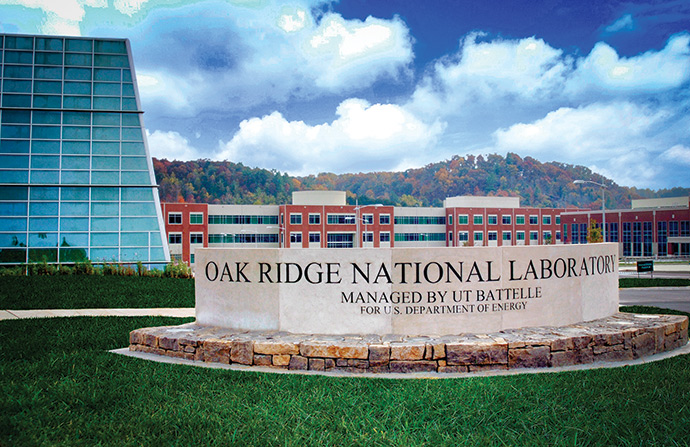The place that changed the course of history 70 years ago is now unleashing a wave of innovation that is changing the future.
Oak Ridge National Laboratory is not just an energy research center. It is a catalyst for new industries and an incubator for new companies. In fact, it’s hard to find any aspect of East Tennessee that is not influenced by the presence of the Oak Ridge National Laboratory. Managed by UT Battelle for the US Department of Energy, ORNL employs 11,877 workers and is largely responsible for the emergence and growth of several major industries in the Knoxville-Oak Ridge Innovation Valley region.
From carbon fiber composites and other advanced materials to nuclear medicine and super-computing, ORNL is the unmatched leader in scientific R&D in the Eastern US.
“We are the largest science and energy lab of all 17 labs under the US Department of Energy,” says Dr. Thom Mason, director of ORNL and chairman of the Innovation Valley board of directors. “We conduct a wide range of research into how the universe works, with direct benefits to our nation’s energy infrastructure and national security.”
And it’s growing. Investing $2 billion into various expansion projects over the last 15 years, ORNL today is an economic juggernaut whose influence is felt worldwide.
“The results of the work we do here get into the private sector and change the world,” Mason says. “To do that, we have to be able to work effectively with industry, and we do that through a variety of mechanisms. We work with companies from all over the country, and we receive tremendous support from this region.”
Talented People Drive ORNL
Mason says it helps that “the local business environment is interested in what we are doing. For the lab, that is a great asset to have. The University of Tennessee, the Tennessee Valley Authority and CNS-Y12 are all huge assets. The knowledge capital represented between ORNL and these institutions is impressive. We have some of the world’s leading experts in instrumentation and controls, nuclear energy, advanced materials, 3D printing and nuclear medicine.”
the Innovation Valley board of directors
An educated workforce and low-cost energy help the lab to be globally competitive, Mason notes. “Our people are our most important component. We have worked with the local community colleges in developing training programs for composites. Thanks to the new Tennessee Promise program, more high school grads in our region are going to community college to get training. It also helps that the partnership of UT Battelle has managed the lab since 2000. That enables us to play to our strengths. We focus on those areas where we are better than everybody else.”
Those areas include transportation, instrumentation and controls, advanced materials, modeling and simulation, energy and advanced manufacturing processes.
ORNL research attracts cutting-edge companies like Local Motors — the world’s first automotive manufacturer to use 3D printing to produce an entire all-electric vehicle — and other firms engaged in the transportation, energy and carbon fiber composites sectors.
Composites Research Leaps Forward
The Oak Ridge Carbon Fiber Composites Consortium is an outgrowth of ORNL. Dan Miller, manager of industrial partnerships and economic development for ORNL, says, “Innovation Valley has been an active member in the Oak Ridge Carbon Fiber Composites Consortium since its inception in 2011. The Innovation Valley team, Oak Ridge National Laboratory and the consortium were instrumental in helping the Knoxville-based Institute of Advanced Composites Manufacturing Innovation (IACMI) win a $259-million government and industry-funded award for composite materials R&D.” Mason notes that the consortium will focus on three areas: carbon fiber composites for automobiles; tanks for compressed gas storage; and wind turbine blades.
“In Tennessee, our primary focus in the consortium will be automotive research,” says Mason. “Dow Chemical, Ford Motor Company and Volkswagen are all in. IACMI is a big win for this region, and we are already starting to see the successes from it. Expansions like Denso and Cirrus are direct results of this alliance; and the enhanced funding for this program will take our research in composites to a whole new level.”
With the lab’s emphasis on hyper-performance computing, more groundbreaking research is sure to follow, says Mason. “The Titan super-computer is replacing Summit, and we are completing the second station of the Spallation Neutron Source. That facility alone represents an investment of more than $1 billion. And we are only just beginning.”
